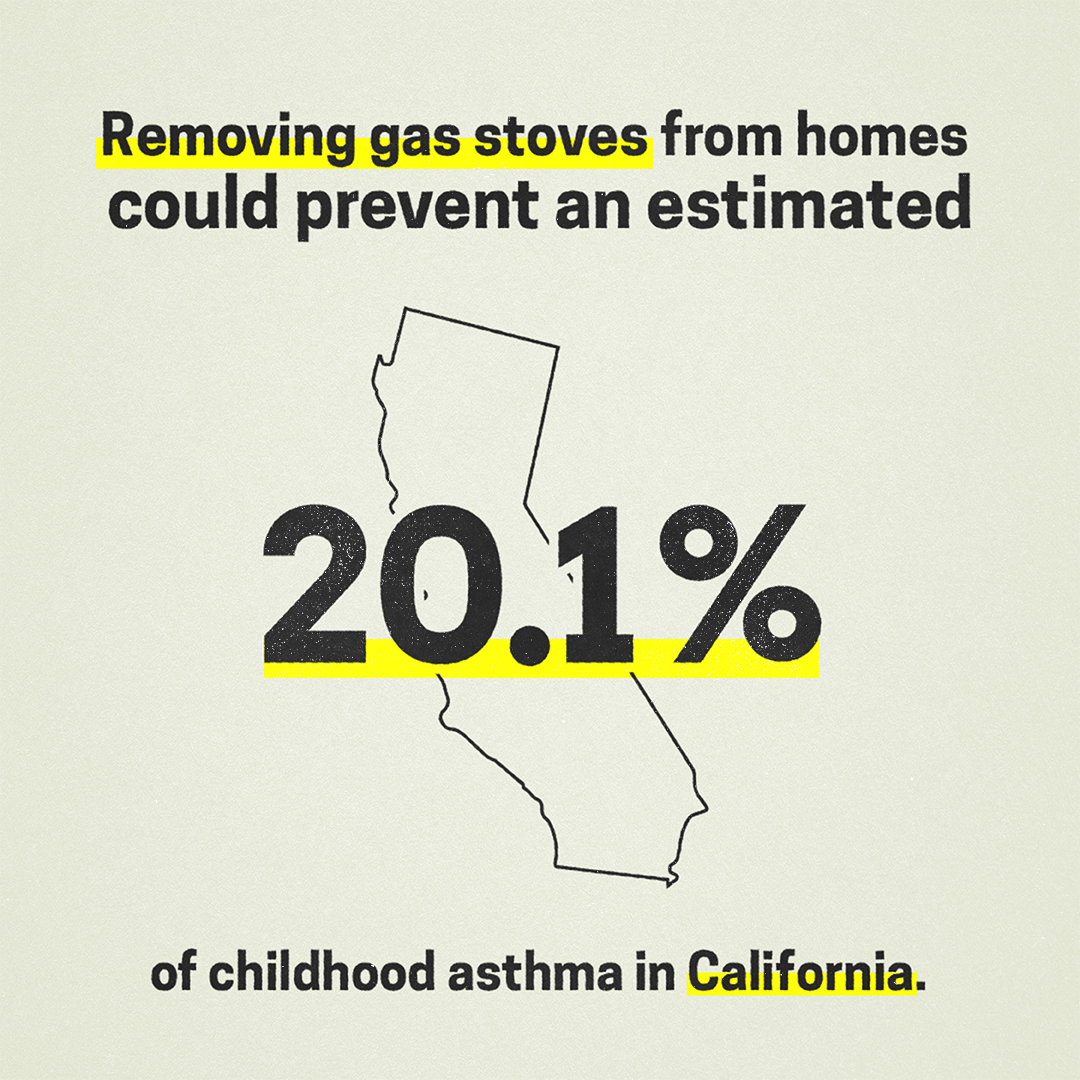FOR IMMEDIATE RELEASE:
January 6, 2022
MEDIA CONTACT:
Chloe Zilliac
650.644.8259
STUDY: Removing gas stoves from homes could prevent 20% of childhood asthma in California
Health advocates call to accelerate efforts to remove from homes toxic gas appliances that contribute to asthma and leak cancer-causing benzene
LOS ANGELES — More than 20% of childhood asthma cases in California can be attributed to gas stove use, according to a new peer-reviewed study published in the International Journal of Environmental Research and Public Health from RMI, Albert Einstein College of Medicine, and the University of Sydney.
In response, California chapters of Physicians for Social Responsibility are calling for California cities and the state to accelerate efforts to ensure an equitable transition to electric appliances that will protect all Californians from the harmful health impacts from gas.
“The implications of these findings are nothing short of stunning,” stated Dr. Robert Gould, President of San Francisco Bay Physicians for Social Responsibility, who has reviewed the findings but was not involved with the research. “For decades, a major contributor to our state’s asthma epidemic has been hiding in plain sight, right inside of our own homes. Moreover, pollution from gas stoves disproportionately harms children and communities of color.”
The study found that gas stove use is attributable to 12.7% of childhood asthma cases in the U.S. — and in California, which has the highest prevalence of gas cooking in the country, that number is markedly higher, at 20.1%. More than 9 million homes in California use gas stoves for cooking, according to EIA’s 2020 Residential Energy Consumption Survey. In 2020, the California Air Resources Board adopted a resolution committing the agency to taking action on pollution from gas appliances due to health concerns specific to indoor air quality.
“Transitioning off of fossil fuels is not just good for the planet, it is good for our health. This research demonstrates the clear need to find equitable pathways off of fossil fuels, both in our homes and in our energy system, with an equitable, community-driven transition to ensure those most at-risk from this pollution are the first to transition,” said Alex Jasset, Nuclear Threats & Energy Justice Program Manager, at Physicians for Social Responsibility – Los Angeles.
The study comes on the heels of a letter last month from Sen. Cory Booker and Rep. Don Beyer, alongside 18 members of Congress, urging the U.S. Consumer Product Safety Commission (CPSC) to address indoor air pollution from gas stoves. Last month, CPSC Commissioner Richard Trumka Jr. said that a ban on gas stoves is a “real possibility” in a webinar with the U.S. Public Interest Research Group in December.
This new data builds on a robust body of research connecting gas stoves with unhealthy air quality in homes. Researchers at UCLA found that 90% of all homes have unhealthy levels of nitrogen dioxide pollution after cooking with gas for just one hour, and homes with gas stoves have 50% to over 400% higher NO2 concentrations than homes with electric stoves. A study released last year found that when turned off, gas stoves in California are leaking alarming levels of benzene, a chemical linked to cancer. In homes with the leakiest stoves, benzene levels are on par to living with a smoker.
“The mounting evidence shows Californians are uniquely vulnerable to gas appliance pollution, due both to the toxics released by burning gas, gas leaks from appliances, and the prevalence of gas appliances in our homes. African-American and Hispanic children with asthma likely bear the brunt of the health burden of indoor air pollution from gas stoves. We are calling on Gov. Newsom and all state agencies to expedite the state’s transition off fossil fuels to secure health and environmental justice,” noted Dr. Gould.
More than 75 cities in California have passed policies to incentivize the use of electric appliances and restrict gas in new buildings, and several cities have begun to look at how to remove toxic gas from existing buildings.
“We know we must immediately begin this transition, with a special emphasis on developing programs for communities that are already health, pollution, and rent-burdened,” said Jasset, who has been working with the city of Los Angeles on their new construction and existing buildings policies. “We need a community-led approach that centers low-income, BIPOC and frontline communities to ensure those already experiencing the highest burden from fossil fuel pollution are the first to gain access to cleaner, healthier homes, in a manner that does not increase costs.”
In Los Angeles, environmental justice organizations partnered with labor and housing advocates to embed a series of energy justice principles into the City’s process for decarbonizing both new and existing buildings. Under current law, upgrade costs can be passed down to tenants, who are already experiencing high rent and energy burdens. To transition away from gas equitably, cities should be proactive in amending laws when needed and creating new pathways for equitable funding to ensure a just transition.
“Asthma is an epidemic in California, costing the state more than $11 billion each year. Now that we know we can avoid 20% of childhood asthma cases by removing gas stoves, our question is, what will Gov. Newsom and health regulators do with this information?” asked Dr. Gould.
###
